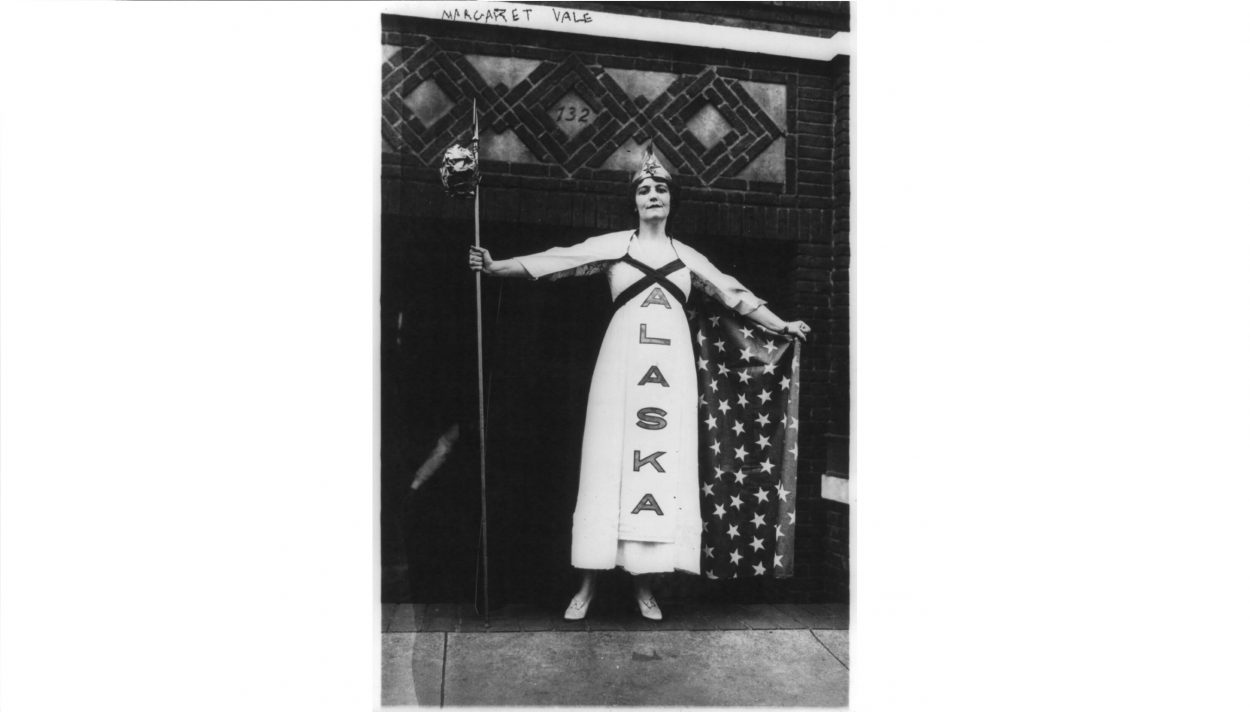
Margaret Vale, the niece of President Woodrow Wilson, representing Alaska in a suffrage parade in New York City in 1915. (Photo courtesy of the Library of Congress)
This year marks the 100 year anniversary of the 19th amendment, which gave women across the U.S. the right to vote. But Alaska women, or at least some of them, could cast a ballot seven years earlier. This year, a traveling exhibit will explore Alaska’s unique journey towards women’s suffrage.
The first Alaska Territorial Legislature convened in 1913. The first bill lawmakers adopted granted women voting rights.
Anjuli Grantham is a historian and curator for the Alaska State Museum. She says the national debate around women’s suffrage was in full swing at this point.
“In fact, the very day that Alaska’s first Territorial Legislature graveled in it was the largest women’s suffrage processional, a kind of march, on Washington D.C. ever,” Grantham says.
With the creation of a new U.S. territory, suffragists and their sympathizers staked their claim.
Congress said Alaskans would decide for themselves if women should vote. Activists mobilized, gathering signatures and lobbying.
This history is outlined in an upcoming traveling exhibit from the state museum. Grantham curated the exhibit, Alaska’s Suffrage Star. It highlights four very different women.
“That’s the best thing about anniversaries I think. It gives us the opportunity to rediscover some of these historical figures that otherwise are kind of forgotten,” Grantham says.
The exhibit features the political will of Temperance leader Cornelia Hatcher and Socialist Party leader Lena Morrow Lewis.
Nellie Cashman was the first woman to vote in 1912. She did so illegally. She was a well-to-do prospector and businesswoman.
Quoting a fellow historian, “the reason she could probably could get away with it was because she was Nellie Cashman and no one was going to tell her no,” says Grantham.
Alaska Native women had a different experience. Tillie Paul — a church elder of Tlingit descent — escorted her Tlingit relative Charlie Jones who had been turned away from the polls in 1922. Tille Paul protested that, and the two were arrested. Charges were dropped later dropped. Two years later, Congress declared all Native Americans as citizens, with voting rights.
This exhibit will premiere at the Cordova Historical Museum on March 6th. Two displays of the exhibit will travel to Anchorage, Wrangell, Fairbanks, Wasilla, Haines, Nome and Homer this year. Institutions can still request the exhibit for 2021.
The exhibit is made possible by The League of Women Voters Alaska, the League of Women Voters Anchorage, and the Friends of the Alaska State Library, Archives, and Museum.
Edit note: An earlier version of this article said Alaska’s Territorial Legislature adopted women’s suffrage in April of 1913. It was actually adopted in March, in the first month of the session.











